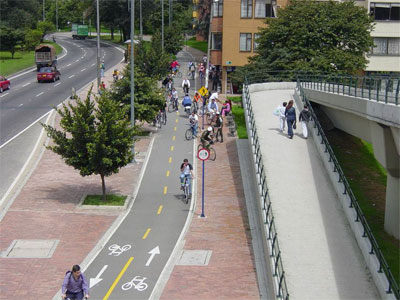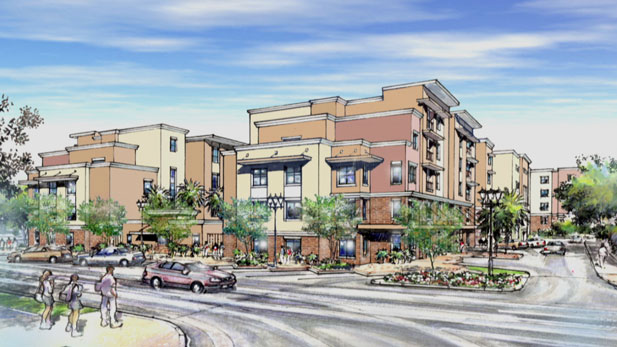For the past few decades, the “Baby Boomer” generation, born between 1946 to 1965, has been the most dominant group in the workforce. Currently, they account for almost two-thirds of the total United States population. We are now at a crossroads where it is expected that the youngest generation in the workforce, the Millenials, born post 1981, will account for over half of the workforce by 2014 (Newberg, 2011). In making the dramatic transition to the Millenials, what will the future of office space need to look like in order to accommodate the soon-to-be dominant generation in the workforce?
Baby boomers and Millenials have different characteristics and work habits, which can be seen in their preferred work and office environments. To accommodate the change in generations within the workplace, the future of office space will be more efficient, promote mobility, and consequently, smaller. In order to analyze the new modern office environments, it is best that we first consider the characteristics and workplace habits of the current workforce generations, then describe the traditional versus modern office space, and finally, discuss its effect on real estate.
Workforce Generations:
Currently, there are four distinct generations who occupy the workforce:
I. Tradionalists II. Baby Boomers III. Generation X IV. Millenials
Each generation has innate core values created by the era in which they were born and the experiences within their lifespan (Swenson, 2008). These core values affect work ethic, office space habits and communication styles. While there are four groups listed, the Baby Boomers and Millenials do account for the majority of workers.
Traditionalists:
Traditionalists, also referred to as the “Silent Generation”, are born between 1922 and 1945 and are the oldest group of individuals in the workplace (Patota,Schwartz, 2007). They also account for the smallest population in the current workforce, less than 10%, due to the fact that the majority of them are older than the average retirement age of 67. Members of this generation, or some of them, have witnessed the Great Depression, the New Deal, WWII and the G.I. Bill. These shared experiences and memories have developed a hardworking and loyal work ethic. Tradionalists grew up at a time when work was seen as a privilege and remained loyal to those who employed them, often times working at the same place for decades.
In today’s age, the Tradionalists are the most tech-challenged and the slowest to change their work habits and embrace the old fashioned style of everything must be written by pen or pencil. They also prefer the face-to-face meeting types and like to build strong relationships not only with people within their office, but also everyone who they converse with professionally.
Baby Boomers:
The most dominant group in the workforce since the 1980s, in terms of population, are the Baby Boomers. This generation is defined by those who were born between 1946 and 1964 and have been witness to many memorable events that shape their lives. The Boomers grew up in a time of reform, economic prosperity, Vietnam and the expansion of suburbia. The only way they have known is to question authority, causing them to rely upon themselves. Baby Boomers are often seen as the most work-centric individuals within the workplace; and are motivated by position, perks and prestige (Govitatana, 2001). They are independent, goal-oriented and competitive and among this group are the majority of current CEOs’ and higher ranking position holders. These hardworking individuals define themselves by their professional accomplishments and the 70-80 hour workweeks which they sacrificed to get to where they are in their professional careers.
Boomers feel the following generations must pay their dues of hard work to advance in life and earn positions based on what they have done rather than who they know. There were 78 million people born into this generation in the United States 76 million of them will retire before 2030, which is at a rate of almost 8,000 per day (Swenson, 2008). This group of soon to be retired workers take the work environment by command and believe in teamwork, optimism and gratification for a job well done.
Generation X:
Generation X serves as the succeeding generation to the post World War II baby boom and are a significantly smaller group of 45 million. Generation Xers’ are comprised of individuals who were born in the period between 1965 and 1980 and make up roughly
35.7% of the American workforce (Boston College, 2007). Among this group of predominantly 30-40 year-olds, 60% of the Generation X group have attended college and are better educated and ethnically diverse than the previous generations. On an individualistic level, most Generation X associates grew up in a time with high divorce rates, two-income families, AIDS, women in the workforce, MTV and the personal computer (Patota, Schwartz, 2007). Most importantly, the personal computer is what allows them to slowly stray away from the previous generation. Generation X was the first generation to grow up with the computer, allowing them to be technologically adept and being a part of the shift from a manufacturing economy to a service economy (Patota,Schwartz, 2007).
Compared to the prior generations, Generation X is more flexible in the sense where they are more willing to switch from employer to employer and also be more flexible in their work schedule. They value the work to live or work/life balance, the balance between work hard and play hard, more than their parents who placed a great importance on the long workweek. Generation X begins to bring a more informal work environment and expect that promotions are based on ability not seniority.
Millenials:
Millenials or Generation Y, are the most recent crop of professionals entering the workforce and are in their 20’s. This generation is significantly larger than Generation X and is the fastest growing group who is expected to dominate the workplace within this coming decade. The Millenials are the group who are “always connected” to their devices, grew up with the Internet, witnessed the attacks of September 11 and the more recent War on Terror (Patota, Schwartz, 2007). Their most specialized skills are their techno-saviness, ability to multi-task quickly, work well in groups, street smarts and social ability.
Millenials are diverging further from the treacherous workweek of the Baby Boomers and are more focused on getting tasks done quickly and efficiently with current technology. The Millenials are an interesting group based on the fact that they are very confident but prefer teamwork work environments and their ability to work with others, share responsibility and rewards is a hint that the workforce is changing. The Millenials quick and technologically influenced life-style allows them to be flexible in their workspaces and occupy the least amount of space.
Traditional Office Space:
Traditional office space, as we know it, was designed to accommodate Baby Boomers. Over the last half-century, we have seen the construction of huge office buildings that house thousands of employees during the workday. The office work environment is very basic; it consists of large private offices for executives and middle managers, assigned workspaces for administrative personnel and general staff, and conference rooms for daily, face-to-face, meetings. On most occasions, the private offices take up the window-front space and the assigned workspaces, which account for the majority of floor space, are located in the center of the building.
According to the
U.S. General Services Administration's recent research, the formula that most businesses use to calculate the average assigned workspace is based on 200 square feet per person, which stems from the Baby Boomer design elements for office space (GSA, 2010). This rule of thumb was created many years ago and is still being used even though the office space essentials for the younger generations are changing.
Along with the changing requirements for office space, the amount of time spent in the workplace is also changing. Traditionally, people commute to work, spend 8 to 10 hours at their desk and at meetings, then commute back home 5 days a week. With new technology and business structure, the workday has changed. We are beginning to see less hours behind the desk, more time spent collaborating with others and most interestingly, its not necessarily face-to-face. With modern technology, employees are now able to work, collaborate and hold meetings from all from their computers. While time at the office is still important, there is becoming less reduced need to be there all day, everyday.
Modern Office Space:
The modern office space is designed with the Millenial generation in mind and in turn is more efficient, promotes mobility, and smaller. The modern office space is a finely tuned version of traditional office space that is up to date and is purpose built. The three characteristics: more efficient, promote mobility, and smaller have been repeatedly mentioned, but how do they lead to the future of office space?
The office spaces of the future are literally smaller. Companies will occupy less physical space and at the same time reduce their operating costs due to the reduce rents. For starters, there will be a reduced number of private offices. Private offices are rather large, under utilized and also provide a place to hide from the rest of the workforce. Since on most occasions, private offices are on the outer edges of the building, they block most of the natural sunlight from illuminating the innermost areas of the building.

The biggest difference is the amount of space allocated towards assigned workstations. Traditional office spaces are over saturated with assigned workstations and are more often than not, under utilized. The assigned workstations will be reduce drastically and will be resized to 50 square feet per person (GSA, 2010). This reduction in size is attributed to the modern technology of Hotelling or Teleworking. Hotelling spaces are an even more informal and community oriented work environment that essentially only requires a laptop. With this new wave of need-based workstations, offices’ are becoming more efficient in the amount of space they occupy and how the use it.
The ability to be mobile is what makes the modern office space possible. With technology such as laptops, the Internet, collaboration tools such as Teleworking, Cisco, Chatter, GoogleDocs, and Box.net, there is no need to be in the office on a daily basis. People can collaborate on assignments and hold meetings or conferences with the comfort of their own homes or even from different countries. Buy reducing the amount of people who attend and occupy the office everyday, the use of less floor space is a cost effective solution.
Effects on Real Estate and the Environment:
As already mentioned, the modern office space uses less physical space, meaning that companies can downsize or more effectively “rightsize” their office space. By reducing the total amount of space used, companies will be able to operate in smaller, more purpose-built office units and in turn leads to a reduced need for new office buildings to be constructed. According to Newberg, the current nationwide office space
vacancy rate is at 16.1%, the highest it has ever been since 1993(Newberg, 2011). With companies reducing their need for floor space, there will less demand for new office buildings.
The modern office space also has a positive impact on the environment. With the use of Teleworking and mobility, employees will have to make less trips to the office, ultimately producing a smaller carbon footprint. By reducing automotive emissions, using less paper within the office, and more effectively utilizing space, the modern office space promotes a green and eco-friendly lifestyle.
Conclusion:
By taking a closer look at the differences in characteristics and workplace habits between Baby Boomers and Millenials, it is obvious that there needs to be a change in the workplace to accommodate the younger individuals and their working styles. Since Millenials are technology driven and are able to work with mobility, the new modern office space is not only more appropriate for the users, but also for the companies who provide the space. By reducing costs, creating more efficient workspaces, reducing the overall carbon footprint, it is easy to see what the office space of the future will look like and where the future of commercial real estate is headed.
Works Cited:
Dobbs, Jason, Patrick Healey, Katherine Kane, Daniel Mak, and Tay McNamara. The Multi-Generational Workforce. Rep. Boston College, July 2007. Web. 6 Oct. 2011. <http://agingandwork.bc.edu/documents/FS09_MultiGenWorkplace_000.pdf>.
Govitvatana, Wipanut V., and Dr. Joseph Benkowski. "Generation Gap in the Workplace Between Baby Boomers and Generation X." The Graduate College University of Wisconsin Stout, 2001. Web. 6 Oct. 2011. http://www2.uwstout.edu/content/lib/thesis/2001/2001govitvatanaw.pdf
Newberg, Sam. "The Incredible Shrinking Office Space – Fact or Fantasy?"UrbanLand Home. Urban Land Institute, 24 Aug. 2011. Web. 3 Oct. 2011. <http://urbanland.uli.org/Articles/2011/August/NewbergOffice>.
Pasieka, Shirley A. "Exploring the Changing Workforce: Understanding and Managing Teh Generation of Millenial Workers." Diss. Northcentral University, 2009. UMI Microform/ Proquest LLC, 13 Mar. 2009. Web. 06 Oct. 2011.
Patota, Nancy, Deborah Schwartz, and Theodore Schwartz. "Leveraging Generational Differences for Productivity Gains." Journal of American Academy of Business, Cambridge 11.2 (2007). Print.
Swenson, C.. "Next Generation Workforce. " Nursing Economics 26.1 (2008): 64-66. Health Module, ProQuest. Web. 06 Oct. 2011.
United States. General Services Administration. Public Building Services. Leveraging Mobility, Managing Place: How Changing Workstyles Impact Real Estate and the Carbon Footprint. June 2010. Web. 2 Oct. 2011. <http://archive.teleworkexchange.com/pdfs/Leveraging_Mobility.pdf>.
United States. General Services Administration. Public Building Services. The New Federal Workplace: A Report on the Performance of Six 20/20 Projects. June 2009. Web. 05 Oct. 2011. <http://www.gsa.gov/graphics/pbs/GSA_NEWWORKPLACE.pdf>.
"Workplace Effectiveness Research Publications." GSA Home. Web. 5 Oct. 2011. <http://www.gsa.gov/portal/content/103982>.


































